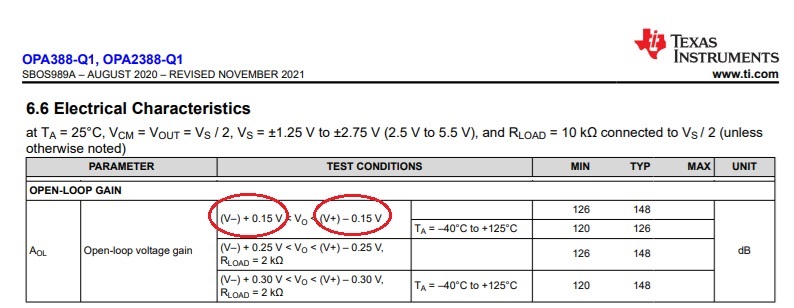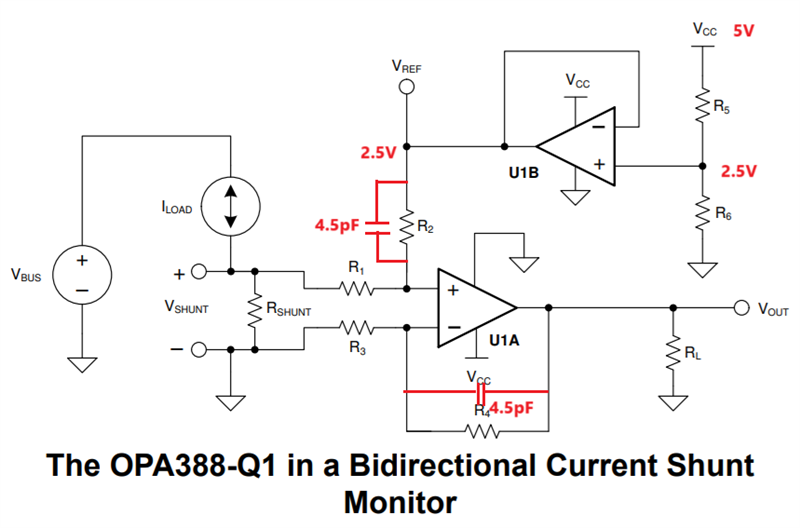Other Parts Discussed in Thread: OPA388
Tool/software:
Hi we need to sense bi directional current from +/-1200A range. we looked for OPA388-Q1(In data sheet it has mention +/-1A) , Whether this is suitable for our application(Automotive Battery Disconnect Unit). can any one confirm on this or provide more information on sensing bi-directional current.
Whether we need to use single op-amp for measurement or 2 op-amp with passive circuit(as per datasheet).



